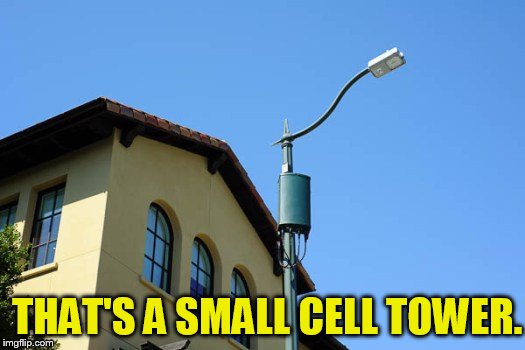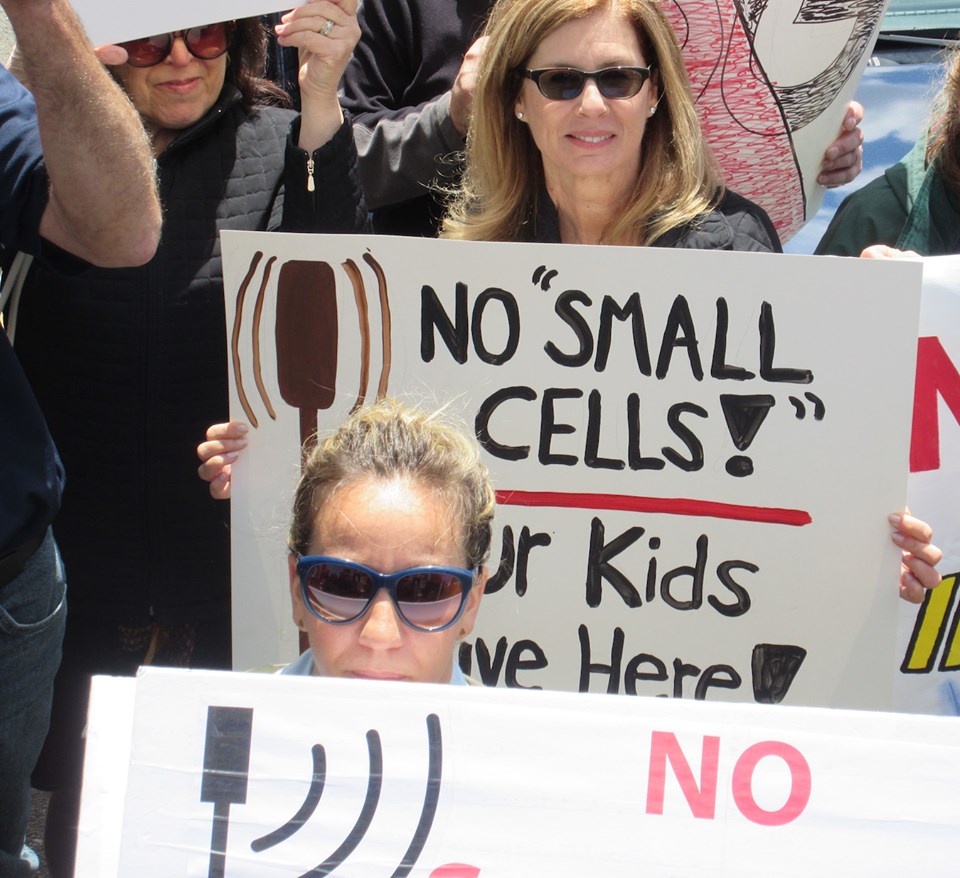 By B.N. Frank
By B.N. Frank
Decades of research has already proven that exposure to radiation from cell towers and antennas as well as other sources of wireless radiation is biologically harmful. In fact, people in the U.S. and worldwide continue to report symptoms and illnesses after 5G and/or 4G infrastructure has been installed and activated near them (see 1, 2, 3, 4. 5, 6). Some have been taking legal action to deactivate towers and/or stop deployment (see 1, 2, 3, 4, 5, 6) and are winning.
From Americans for Responsible Technology:
The Flower Hill decision establishes an important legal basis for denying small cell applications for towns and cities in Connecticut, New York and Vermont.
In a landmark legal decision in July of 2022, Judge Frederic Block, Senior United States District Judge for the Eastern District of New York, found that the Village of Flower Hill, NY, was justified in denying the application of ExteNet (acting as an agent for Verizon Wireless) to place 18 small cell antennas in the Village.
The Judge quoted from the 1996 Telecommunications Act, citing the provision that “nothing in this chapter shall limit or affect the authority of a State or local government or instrumentality thereof over decisions regarding the placement, construction, and modification of personal wireless service facilities.”
He noted that other courts have found the Act to be “in many important respects a model of ambiguity or indeed even self-contradiction.” Nevertheless, he reasoned, a plain reading of the text supports the claim by the Village that it has acted legally, establishing a strong written record and denying the applications based on legitimate principles.
Most importantly, the Judge ruled that the provisions of the 1996 Act do not necessarily apply to the new uses of wireless to provide broadband and other services, as the FCC claimed in a 2018 Ruling. “Improved capacity and speed are desirable (and, no doubt, profitable) goals in the age of smartphones,” he wrote, “but they are not protected by the Act.”
The judge quoted a previous court case, in which the court found that “It is is not up to the FCC to construe the [1996 Telecommunications Act] to say something it does not say, nor up to the Court to find broadband communication encompassed by the law.”
This decision is at odds with a very confusing decision from the Ninth Circuit in California concerning the legitimacy of the FCC’s action and whether or Congress intended the Telecommunications Act to apply not only to talk and text, but to a broad array of new services. The Flower Hill case is being appealed to the Second Circuit; if the Appeals Court agrees with Judge Block the issue could go to the Supreme Court.
Nevertheless, for the moment, at least in the Eastern District of New York, local governments are empowered to legally deny permits for small cell antennas until and unless the applicant can prove that there is a significant gap in phone coverage in the area.
A copy of the judge’s decision can be found here.
To view our Municipal Code Checklist and Smart Planning Provisions for Cities and Towns, please visit our Tool Kit.
In 2021, a federal court ruled in favor of organizations and petitioners that sued the Federal Communications Commission (FCC) for NOT adequately protecting Americans from wireless radiation exposure. Additionally, in 2019, telecom executives gave congressional testimony that they had NO scientific evidence that 5G is safe.
Despite the court ruling and the congressional testimony, the FCC (see 1, 2, 3, 4, 5, 6, 7, 8, 9, 10, 11, 12, 13) as well as other government and state agencies and committees (see 1, 2, 3, 4, 5, 6, 7) continue to promote and fund the deployment and densification of both 5G and 4G cell towers and antennas (see 1, 2) as well as other wireless radiation emitting infrastructure including public Wi-Fi. American businesses and school districts continue to install 5G, 4G, and Wi-Fi for “private networks” as well (see 1, 2).
Opposition to 5G is worldwide which has limited, slowed, and/or stopped deployment in some locations (see 1, 2). Since 2017 doctors and scientists have asked for moratoriums on Earth and in space (see 1, 2) and the majority of scientists oppose deployment. Since 2018 there have been reports of people and animals experiencing symptoms and illnesses after it was activated (see 1, 2. 3, 4, 5). Some researchers have suggested that 5G activation may be contributing to COVID-19 infections as well as hundreds of thousands if not millions of bird deaths. Of course, there are also health risks associated with exposure to 4G and other sources of wireless Wi-Fi radiation (see 1, 2) and Electromagnetic Fields (aka “Electrosmog”) and that may be contributing to various symptoms and illnesses as well, hence the opposition to both 5G and 4G cell towers and antennas especially in residential neighborhoods.
Activist Post reports cell towers, antennas, and other unsafe technology. For more information visit our archives and the following websites.
- Americans for Responsible Technology
- Environmental Health Trust
- Electromagnetic Radiation Safety
- Physicians for Safe Technology
- Wireless Information Network
Become a Patron!
Or support us at SubscribeStar
Donate cryptocurrency HERE
Subscribe to Activist Post for truth, peace, and freedom news. Follow us on SoMee, Telegram, HIVE, Flote, Minds, MeWe, Twitter, Gab, What Really Happened and GETTR.
Provide, Protect and Profit from what’s coming! Get a free issue of Counter Markets today.


Be the first to comment on "Judge Rules in Favor of Council’s Decision to Deny Small Cell Antenna Deployment; Quotes Telecom Act of 1996"